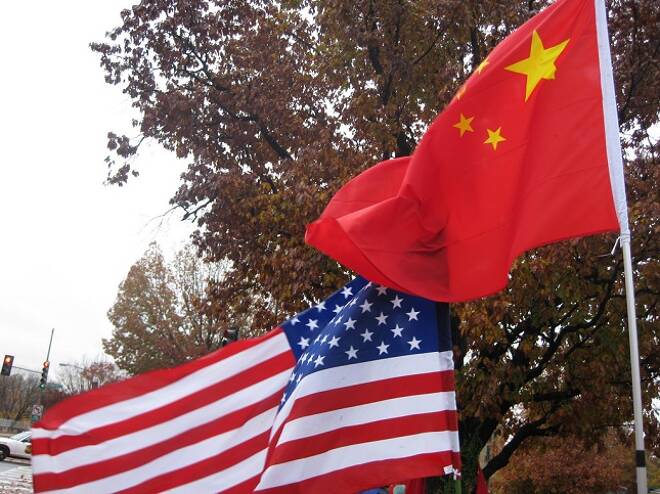Advertisement
Advertisement
US and China Drafting Memorandums to End Trade War
By:
This news should help underpin the stock market on Thursday. It’s also favorable news for crude oil because a trade deal could help revive China’s economy, which would likely lead to increased energy demand later in the year. Furthermore, it lifts one of the uncertainties the Fed highlighted in its monetary policy meeting minutes released on Wednesday.
Early Thursday, Reuters is reporting the United States and China have started to outline commitments in principle on the stickiest issues in their trade dispute, marking the most significant progress yet toward ending a seven-month trade war, according to sources familiar with the negotiations.
The news is helping to support the U.S. Dollar, while putting pressure on dollar-denominated gold futures. Appetite for risky assets is also increasing. U.S. Treasury yields are rising on dampened concerns of a global economic slowdown.
Reuters is saying, “Top U.S. and Chinese trade officials are working this week to hash out language on six broad agreements that aim to resolve the most contentious issues in their seven-month trade war.”
Sources familiar with the talks told Reuters that “negotiators are working on six memorandums of understanding for actions to be taken by China on structural reforms to trade and economic policies.”
“U.S. and Chinese negotiators are also discussing a 10-item list of shorter-term measures, largely purchases of commodities and other goods.”
The key areas and issues expected to be covered include:
- Forced Technology Transfers and Cyber Theft
- IP Rights
- Agriculture
- Services
- Non-Tariff Barriers
- Currency
- Bilateral Trade Deficit Reduction
- Enforcement Mechanism
Forced Technology Transfers and Cyber Theft
The United States wants China to ensure foreign companies do not come under pressure to transfer technology through joint venture requirements, unfair business licensing and product approval practices, or other forms of coercion. Washington also wants China to step up policing and prosecution of hackers.
IP Rights
The United States wants China to strengthen licensing laws and their enforcement to ensure that licensed IP is not stolen. This includes more criminal prosecutions of copyright and other intellectual property violations.
Agriculture
The United States wants China to open its markets to U.S. poultry, beef and other farm products. It wants restrictions on grain shipments brought in line with WTO obligations. The U.S. wants China to approve new genetically modified seed traits more quickly. Washington also wants China to remove tariffs on ethanol and distiller dried grains.
Services
The United States wants China to open its financial services markets to more foreign firms, including credit card giants Visa and MasterCard.
Non-Tariff Barriers
The United States wants China to lift non-tariff barriers including China’s industrial barriers, numerous regulations, business licensing procedures, product standards reviews and other practices to keep U.S. goods out or give an unfair advantage to domestic Chinese firms.
Currency
U.S. officials are calling for stability in the Yuan. The main concern for the U.S. is the undervalued Yuan. The United States wants China to stop devaluing the Yuan to gain a competitive advantage.
Bilateral Trade Deficit Reduction
The United States and Chinese officials are discussing ways to quickly reduce the trade deficit with the U.S. These include large purchases of commodities and other goods.
Enforcement Mechanism
The U.S. want to build a mechanism to measure China’s progress on pledged reforms into the deal. China has previously broken promises to reform on the structural issues, and says an enforcement mechanism will prevent that happening again.
Market Reaction
This news should help underpin the stock market on Thursday. It’s also favorable news for crude oil because a trade deal could help revive China’s economy, which would likely lead to increased energy demand later in the year.
Furthermore, it lifts one of the uncertainties the Fed highlighted in its monetary policy meeting minutes released on Wednesday. This is one of the reasons the Fed cited in its decision to remain “patient” and leave its tightening policy on hold. This may be the reason why U.S. Treasury yields are rising early Thursday. Higher Treasury yields will be supportive for the U.S. Dollar, which could put pressure on dollar-denominated gold prices.
About the Author
James Hyerczykauthor
James is a Florida-based technical analyst, market researcher, educator and trader with 35+ years of experience. He is an expert in the area of patterns, price and time analysis as it applies to futures, Forex, and stocks.
Did you find this article useful?
Latest news and analysis
Advertisement
